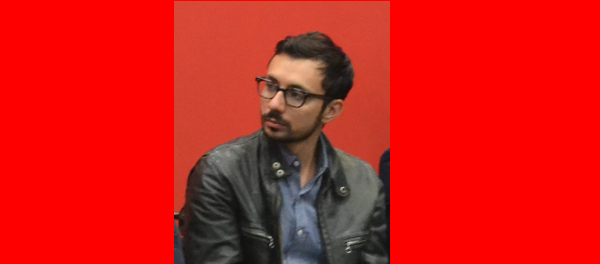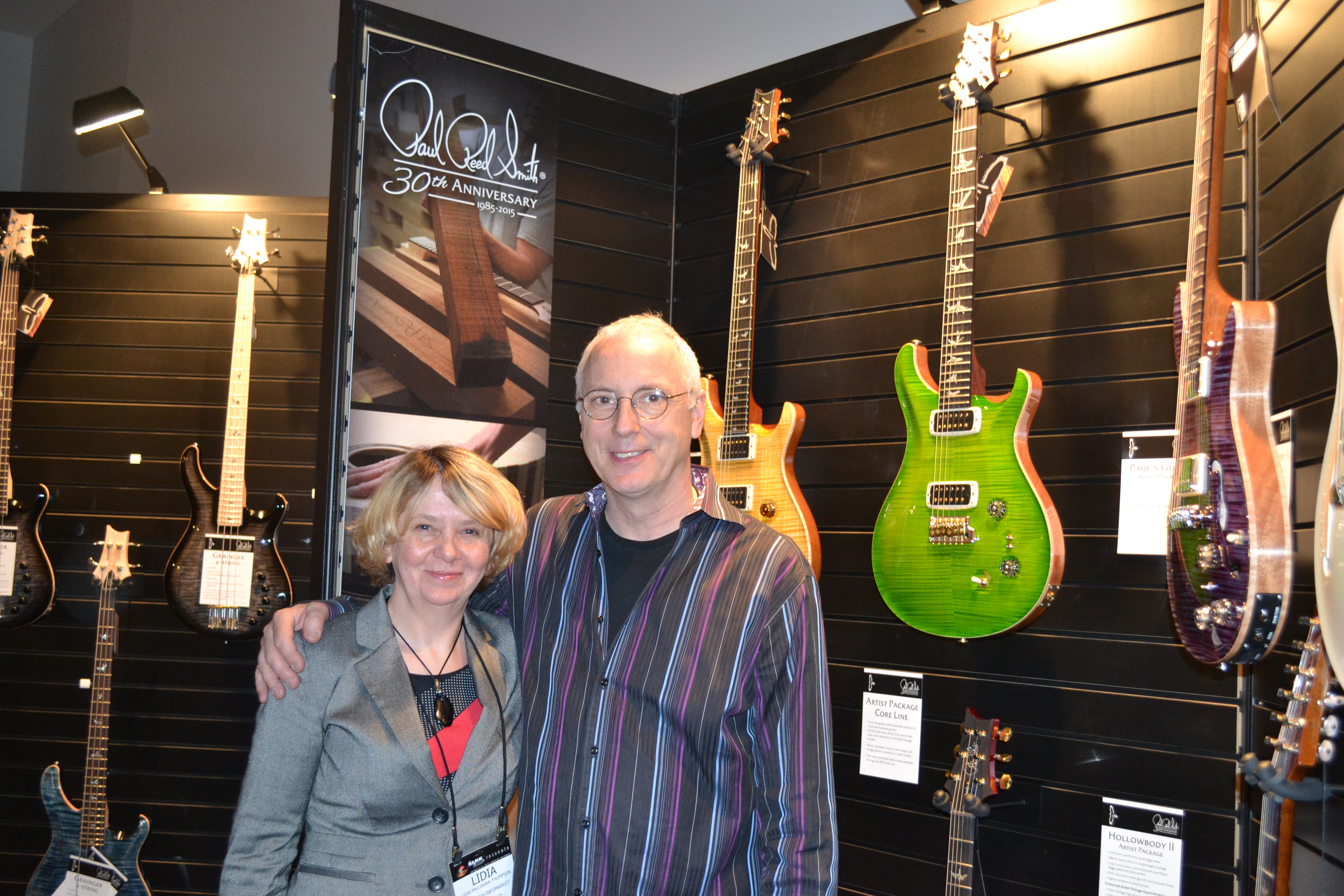
by Lidia Paulinska | Sep 1, 2015
August 2015, Siggraph – David Karlak, a filmmaker based in Los Angeles, sees VR as an extension of the dreams that we have always had. He predicts that beyond VR, there will be additional technologies that will give us more immersive experiences. These experiences will include characteristics and senses from the physical world, such as smell. The opinion of the panel was that VR is not a necessity to be pushing innovation, but it is instead a wish fulfilling technology. For now, access to VR is not affordable to 99% of the world, but over time it will be more popularized and democratized.
Karlak has been exploring the confluence of virtual reality and science fiction cinema. He directed the short film “Candidate” that created a lot of buzz in the industry. Following this success, he raised funds on Kickstarter for his next project “Rise”, a film about a robot revolution in the future, told from the perspective of the robots. He sold the original story concept to Warner Brothers. Soon after sale of “Rise”, he sold a second original pitch titled “Outliers” to 20th Century Fox.
When he talked about VR he reminded the audience about the scene from “Reservoirs Dogs” by Quentin Tarantino. There was a scene in the film where all the characters were sitting on the table and the cameras was on a dolly which was rotating from one character to another. Having that camera calling out the characters in that moment is like having a camera on the table. “It actually make things simpler”, said Karlak . ”There is more emphasis on blocking of your actions in oppose to blocking of the camera. The camera in some ways disappeared leaving the viewer deeply immersed in the dialog and action of the scene.” He sees VR as alternative to Facebook or Instagram. People instead on spending time posting on social media, they will be “physically immersed” and connected in VR.

by Lidia Paulinska | Sep 1, 2015
August 2015, Siggraph – Allen Bolden, CGI artist and visual effects veteran with credits including “Marvel’s The Avengers,” “Iron Man” and other blockbuster productions, agreed that everyone has a dream or story in their head. He recently developed a real time intelligence system named Tina to help those dreams or stories to get out to the screen. He worked on that program for the last 10 years and now gets “textual input, visual output”.
“My team”, explained Allen, “took all those tedious things and put it into this simple program. For example, if we type “bowl on the table”, the software creates a CGI image of a bowl and of a table. The beauty is the more you work with Tina, she learns more about you and your preferences. Tina is an intelligent work companion that is handy and works with us towards our goals. People see things in subjective ways, so the CGI image can be different from what they expected. There is a way to change the image and improve program to make the image the way we like it.

by Lidia Paulinska | Jul 1, 2015
Ori Inbar is the organizer of the Augmented World Expo and the Executive Director of AugmentedReality.org. After a slight delay from the scheduled time at the show while Ori was addressing physical realities of the dynamics of a several hundred attendee show logistics on opening day, we sat down for a short talk on AR, VR, where the industry is and where he thinks it is going.
The first topic was will the technology hold this time and is there a monetization model for it. Ori felt that just like mobile, the monetization plan starts with the business and industrial sector. There is a ramp and a learning curve and the tech has to get a foothold, but once it does the applications advance and the products become standard. This is what is happening now with Augmented Reality (AR) in the enterprise and life science space. Manufacturing, ICT & Enterprise are both embracing and driving the monetization of the technology in the areas of training and for technicians. This is the first stage like the transition from “block” phones to flip phones in Mobile.
The next transition was moving these flip phones to large display phones/PDAs and then smart phones. This was a consumer driven cycle and primarily driven by the experience of the phone. This is similar to Virtual Reality (VR) which is still incubating and trying to hone in on the correct experience for the market. Just like the smart phones were driven by the content of the app creation marketplace, a similar content availability needs to take place for VR.
Ori continued, that there is a use model difference, since VR is a closed screen, it is a download based product. All of the content is created and scripted for consumption such as films, games, travel replays and documentary style information. AR on the other hand is a see-through overlay type of experience. The content is typically streamed to the unit in real time based on the situation and feedback from a camera or the user and providing direction. This creates a dynamic content environment, and it is also much more familiar to the user. The AR market is starting to get consumer gaming and other interactive tasks in development already. An example is companies like Lyteshot that are at the expo.
All of this means the evolution is progressing. There are new and exciting applications coming to market every day such as Recon Instruments new ReconJet eyeware to bring AR glasses as an overlay display device for an SAP mobile app. The Recon Jet comes preloaded with software for sports and athletes. Cyclists and runners can see their performance metrics such as speed/pace, distance, duration, ascent/descent, heart rate, cadence, and power. The eyeware has a developer’s kit for further integration with smartphones and that sort of work will bring the product to the consumer market.
He continued that right now the AR and VR worlds are diverse and competitive, but standards are coming in. This will help developers as they can target larger markets for their efforts, not must one model or vendor and it should help with the content creation and availability issues. Another big advance is common terminology; there is an effort to standardize a language for AR and VR which will allow the community to converse and share ideas more rapidly. Ori indicated that this is what is needed to help tie the community together. In short – AR will stick in the market this time, and VR has a good chance also, but it is up to the community to listen to the customers, not just develop for themselves.

by Lidia Paulinska | Jun 25, 2015
At E3 2015 we had a chance to sit down for a 1:1 with Loot Interactive co-founder David Sterling at their first “press and partner” evening event held at the show. In a very well attended event at a local Mexican restaurant we talked to David about the Indie game marketplace and how Loot Interactive was trying to stand-out from the crowd.
Unlike most indie publishers, they are not targeting just F2P games on the mobile phone & tablet platforms. Instead they are going for the console market because the environment is more immersive, a directed action (you are choosing to play a game not killing time until a bus or train) with a bigger screens. While the games they are currently publishing are based on the Unity flow and not epic graphics crazy, the ability to build challenging stories for the game allows them to present a new spin on the discovery game genre.
The console, due to its closed operating system, known hardware configuration and now integrated connectivity allows the games to streaming based so there are options for more engaging action than a single download mobile game. As an indie publisher, they can search for games from innovative developers from different genres and bring the games together. The purpose was to help expose these interesting games and unique stories that otherwise would not be told to a large audience. It also allows them to developmentally, try different content approaches to AR and VR with products like the Sony Morpheus platform. This can bring new experiences to the user, and as an indie publisher, bring a variety of titles to the product rather than relying on just continuation of a single franchise title.
At this time, David is focusing on finding new titles, and new developers to bring into their publishing fold. Down the road, the group will be looking into implementation of the transmedia angles on the titles they produce. Being able to support other types of media – books, table games, TV, movies, etc is always important for a creative story – but for now, Loot Interactive is focusing on the console game aspects. David indicated they need to full establish themselves and get a foot hold in the market, before branching off into to many other things – that is how companies get lost in the growth cycle.

by Lidia Paulinska | Apr 19, 2015
While at NAB 2015, we had a chance to have a 1;1 talk with new Global President of Professional AV for Roland Corp Kim Nunney. Kim steps into this role from his recent position of North American President for Roland Corp. Kim and his team were credited with the turnaround on the North American marketplace for both the consumer and professional products.
To kick off the discussion, as there is so much encroachment of consumer level up into the professional market place with features and motivation to produce more price aggressive and lower entry points of the professional market what is “pro AV for Roland”? Kim defined this space under two themes – the Professional AV space is a B2B marketplace, it deals with performers, studios and stages. The core technologies for these markets are live sound and broadcast audio & video. The Roland path is to develop hardware to simplify the live performance and broadcast control with new UIs for the equipment.
Kim went on to discuss that device they are making are focused on high level content – 4:4:4 for broadcast, 4:2:2 for live events for the video side, 24bit/96K for the audio both in the digital domain. These ae important as the use of the devices for streaming applications should be treated the same as for “live” as they are both temporal delivery without the option to miss capture or mess up on playout. The professional line is for reliability, repeatability and configurability so they can not only be setup as needed, but are always available when call on.
For these applications, the Roland Pro AV products deal with the front end of the signal flow – DRM, wrappers, metadata, security & encryption are done after the hardware in post or before the equipment on ingest. The newest generation of the product are all network integrated and aware, which makes for connectivity on an in-house or hybrid (in-house and cloud) workflow are supported in native mode for the devices.
Kim indicated that the trend is to continue this same high reliability both mechanically and electrically on the products to be able to produce the best live performance & broadcast experience and simplify the control & interface with software.
The company has a strong history in the Pro AV space and the newly re-vitalized Roland is aggressively moving towards delivering new modular products to the market that have the capability to address emerging audio and video standards, without having to make the customers develop new workflows. Kim hopes to be able to duplicate the North American business units success on a global basis with the professional products.

by Lidia Paulinska | Mar 11, 2015
Paul Reed Smith is a master luthier and the founder and owner of PRS Guitars which is considered one of the top makers of high quality guitars in the United States. Carlos Santana, Orianthi, Jimmy Buffett all claim their PRS guitars are their favorite instruments. Ted Nugent has owned a PRS guitar for decades. Mike Oldfield, Larry LaLonde, Al Di Meola have also used PRS guitars in public performances.
It was a strong passion to make it?
There was a strong passion to be at the band. I wanted this piece of gear but I did not have money so I needed to make it. So if I wanted to base I made it if I wanted a guitar I made it. Because I wanted the staff people at the band have but I can’t get money from my family so I made it.
Apparently that was easy for me to do it, I can measure something and make it. That was fun I enjoy it and then I started to make living by making the instruments for professional musicians and I finally got Carlos Santana and Al Di Meola and Howard Leese. From that point he started his own company as he said: there was enough power in guitar business to be endorsed so people will pay attention when he goes to market”. Santana, Leese, Di Meola there were people they took me under their wings. He decided to do it.
If I could play in the band in high caliber as Carlos’s band or Deep Purple or whatever I would done it but I wasn’t good enough musician. My decision was financially driven. If I want my kids to go to good college I needed to make living. Otherwise I wouldn’t be able to rise the family.
How did you settle on what the product line was?
It is all like baby steps. If you making the instruments for somebody you are making modifications like baby steps. There were some big steps modifications – they wanted me to change a body shape that we are using now (big step), to put the burden laze (?) major step, when we switch to get more sound from the guitar (major step). But if I met somebody like Peter Frampton and I said I wonna make a guitar I would go to the rodeo and ask to play his guitars and get an idea what he liked and I would put in the middle between his instruments. You can learned about what musicians like by using what gears they use. If I walk to the studio and I see what gears a guy is using I get general feel for it, what he likes to use. Smith – you are making a judgement where to point the gun.
Do you feel like you good at the judgments?
Sometimes perfect shot is the first shot. Sometimes it takes 30 years. With Carlos Santana the first guitar I made for him he did not like it, the second one he really, really liked. From there that was fine. John McLauglin on other hand, I was waiting for him to order a guitar from me for 30 years. One day, son, you will be good enough, one day. Now we are working on giving a shot very, very good guitar players. We see. It depends, sometimes you know from day one, sometimes you have to wait.
What wakes you up at night?
The guitar business never wakes me up at night, but struggle with people does. Never when I struggle with gears. Things between people yes, but never things between me and physics.
What is more challenging finding a the right gears or finding the people?
It is all the same bucket, I can’t separate it. I can tell you that not finding the solution can be very painful. You have so many famous people out there, if you would find the right solution for them they will give you an order. If you have an employee you have disagreement with, it can even more painful than not getting an order. The people are the both the challenge and the prize.
What do you do to manage the challenges?
I used to have a cat that sat on my lap and calmed me down. But that cat died. Right now, I focus on my 5 children – 3 blood, 2 step. They are the calming influence.
Would like them to be your successors?
No, that not fun. Why? I want them to do what they want, you can’t forcing something on somebody. My dad wanted me to be a mathematician, but I thought that did not happen. But it turns out making guitars is pure math, it took me 30 years to figure that out. He was really good in one kind of math, I am good at visualizing geometrics. If you are guitar maker you need to be able rotate the design in your head in 3-4 dimensions before you make it.
Page 6 of 7« First«...34567»





